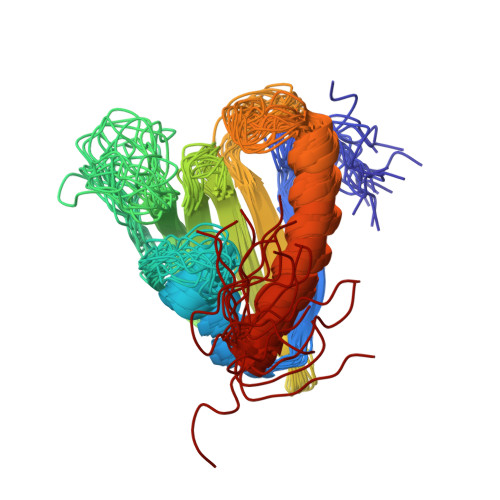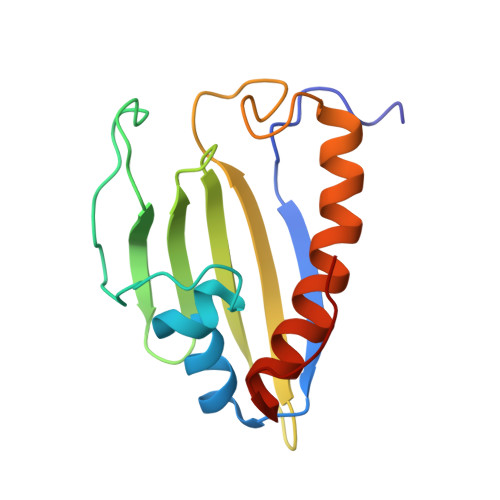Solution structure and function of YndB, an AHSA1 protein from Bacillus subtilis.
Stark, J.L., Mercier, K.A., Mueller, G.A., Acton, T.B., Xiao, R., Montelione, G.T., Powers, R.(2010) Proteins 78: 3328-3340
- PubMed: 20818668
- DOI: https://doi.org/10.1002/prot.22840
- Primary Citation of Related Structures:
2KTE - PubMed Abstract:
The solution structure of the Bacillus subtilis protein YndB has been solved using NMR to investigate proposed biological functions. The YndB structure exhibits the helix-grip fold, which consists of a β-sheet with two small and one long α-helix, forming a hydrophobic cavity that preferentially binds lipid-like molecules. Sequence and structure comparisons with proteins from eukaryotes, prokaryotes, and archaea suggest that YndB is very similar to the eukaryote protein Aha1, which binds to the middle domain of Hsp90 and induces ATPase activity. On the basis of these similarities, YndB has been classified as a member of the activator of Hsp90 ATPase homolog 1-like protein (AHSA1) family with a function that appears to be related to stress response. An in silico screen of a compound library of ∼ 18,500 lipids was used to identify classes of lipids that preferentially bind YndB. The in silico screen identified, in order of affinity, the chalcone/hydroxychalcone, flavanone, and flavone/flavonol classes of lipids, which was further verified by 2D (1) H-(15) N HSQC NMR titration experiments with trans-chalcone, flavanone, flavone, and flavonol. All of these compounds are typically found in plants as precursors to various flavonoid antibiotics and signaling molecules. The sum of the data suggests an involvement of YndB with the stress response of B. subtilis to chalcone-like flavonoids released by plants due to a pathogen infection. The observed binding of chalcone-like molecules by YndB is likely related to the symbiotic relationship between B. subtilis and plants.
Organizational Affiliation:
Department of Chemistry, University of Nebraska Lincoln, Lincoln, Nebraska 68588-0304, USA.
















